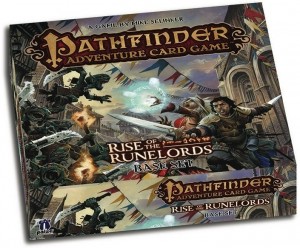 There is a tendency in RPG’s to think of actions as atomic. You swing a sword, pick a lock, climb a rope or whatever. This is, of course, a convenience that helps mechanize the experience. It allows us to create a consistent fiction and crystallize out moments of uncertainty in the form of actions with uncertain outcomes, resolve those uncertainties, and proceed with the fiction.
There is a tendency in RPG’s to think of actions as atomic. You swing a sword, pick a lock, climb a rope or whatever. This is, of course, a convenience that helps mechanize the experience. It allows us to create a consistent fiction and crystallize out moments of uncertainty in the form of actions with uncertain outcomes, resolve those uncertainties, and proceed with the fiction.
It’s good tech, and it dovetails well with the existence of skill lists. Skills are, after all, flags for uncertainty which are agreed upon in advance. As the OSR joke goes, no one fell off a horse in D&D until the riding skill was introduced. Rolls happen when the conceptual space of skills intersect with the crystallization of a challenge.
For all that this approach is very common, it is not the only way to go. Even within atomic systems, things break down when you step back a level of abstraction – picking a lock is a very different challenge than getting past a door, which might also be smashed, circumvented, dismantled or otherwise removed from the equation. In an atomic system, each of these is a separate moment of uncertainty resolved differently. In fact, one of the hallmarks of a good GM is their ability to interpret unexpected actions within this atomic model.
In the case of games without skills, there are no clear intersections. That is, whereas pickpocketing, climbing and lockpicking provide easy cues for when an where to introduce uncertainty and challenge, “The Artful Dodger” does not. And so most game nerds will, effectively turn broader descriptors into what are effectively containers for a skill list which exists in the GM’s head. This is a reason that games like Risus or Over the Edge are often very comfortable to affirmed gearheads – they look light, but they can run on the substantial backend that the GM has in their head.
More interestingly, those sorts of games can take on a whole different character if one is not already trained in more atomic games, but that’s a rare case. But it crystallized very interestingly for me in recent discussion of FAE. See, FAE’s approaches are structurally similar to broad, descriptive skills, but they critically differ in that their domains overlap VERY strongly. That is to say, there is no practical way to construct a virtual skill list for each FAE approach because it contains too many skills AND it shares most of those skills with other approaches (sometimes all other approaches).
On its own, this is neither good nor bad, but it creates a very specific problem when one is used to the intersection of skills and challenges. If you are used to thinking of problems in terms of skills, and you present the players with challenges in uncertainty in those terms, then you’re going to be staring down a disconnect, because your players are already thinking at the next level up of abstraction – you may want them to pick the lock, but they want to get past the door.
And this, in turn, points to a very common concerns with FAE’s approaches – that a character will always just pick their best approach. At first blush this seems like a problem because if this were a skill, it would be. Over-broad skills and skill substitution are known problems in RPG design, best avoided or carefully controlled. FAE runs blithely past those concerns, and that looks like a problem.
And it is, if your perspective does not change. If challenges are approached atomically, then approaches get very dull, very quickly – do you quickly pick the lock? Do you carefully pick the lock? Maybe you sneakily pick the lock?
Honest to God, does anyone really care?
If you narrow your focus down to picking the lock, then approaches become virtually meaningless because the action (and by extension, the fiction) becomes muddled. If someone was watching your character pick the door, they’d just see you pick the lock – there would be no particular cues that you were being quick or clever or whatever the hell you were being.
And that’s because picking the lock is solving the wrong problem. There are games where it’s the right problem, and you probably have a lot of experience with those games. It is not the wrong problem in those games, but in FAE, it is driving a screw with a hammer.
The heart of it, to my mind, is this – different approaches should inspire different actions, even if the ends are similar. If there is no obvious difference in how an approach impact the scene, then of course the player will use their highest bonus. This is not them exploiting the system, this is you asking them the wrong question (or going to dice over the wrong thing). You need to step back a level, get the bigger picture, and see what that looks like.
As a FAE GM, you have a little bit less power than normal, but you still have some potent tools, and one of the most subtle and critical is that you determine when a roll is called for. In atomic systems. this does not necessarily call for much consideration – character uses a skill, player rolls the dice, character gets results. FAE does not offer you that same crutch, and if you turn to it out of habit, then you run the risk of diminishing your experience. FAE is a bad skill-based game, and if you run it like a skill based game, you may have a bad experience. But FAE is a pretty good approach-based game. Try treating it that way, and see what happens.


